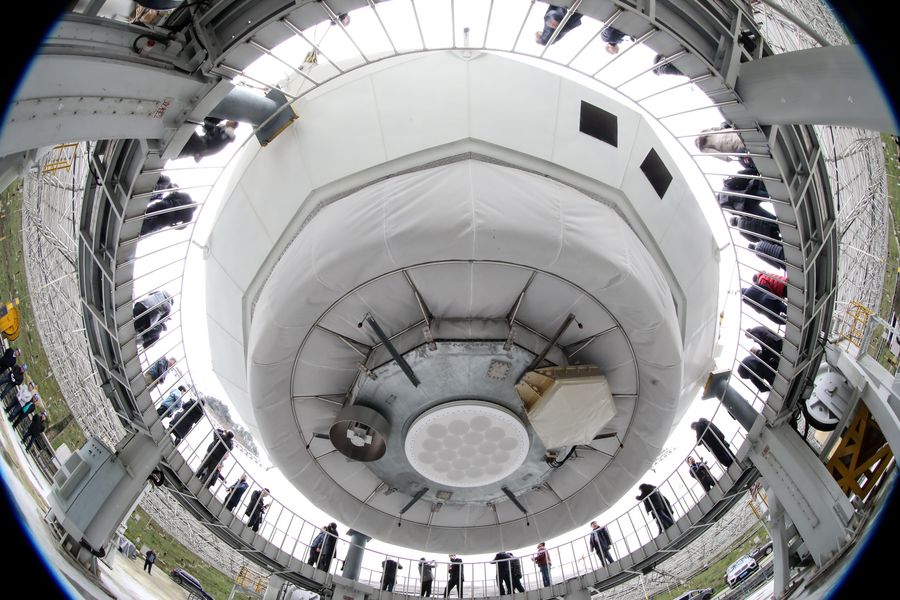World's largest radio telescope starts formal operation


In over two years, FAST has identified 102 new pulsars, more than the total number of pulsars discovered by research teams in Europe and the United States during the same period.
It has also improved the timing accuracy of pulsars to about 50 times the previous level, making it possible for humans to detect extremely low-frequency Nahertz gravitational waves for the first time.
Dubbed "China Sky Eye," FAST is about 2.5 times as sensitive as the second-largest telescope in the world and capable of receiving a maximum of 38 gigabytes of information per second.
FAST has expanded four times the volume of the space range that radio telescopes can effectively explore, which means that scientists can discover more unknown stars, cosmic phenomena and laws of the universe, or even detect extraterrestrial life, said Li Kejia, a scientist at the Kavli Institute for Astronomy and Astrophysics at Peking University.
Carl Heiles, a professor of astronomy at the University of California, Berkeley and a member of the National Academy of Sciences of the United States, said FAST has provided revolutionary opportunities to astronomy, especially in identifying pulsars and observing interstellar clouds.
























